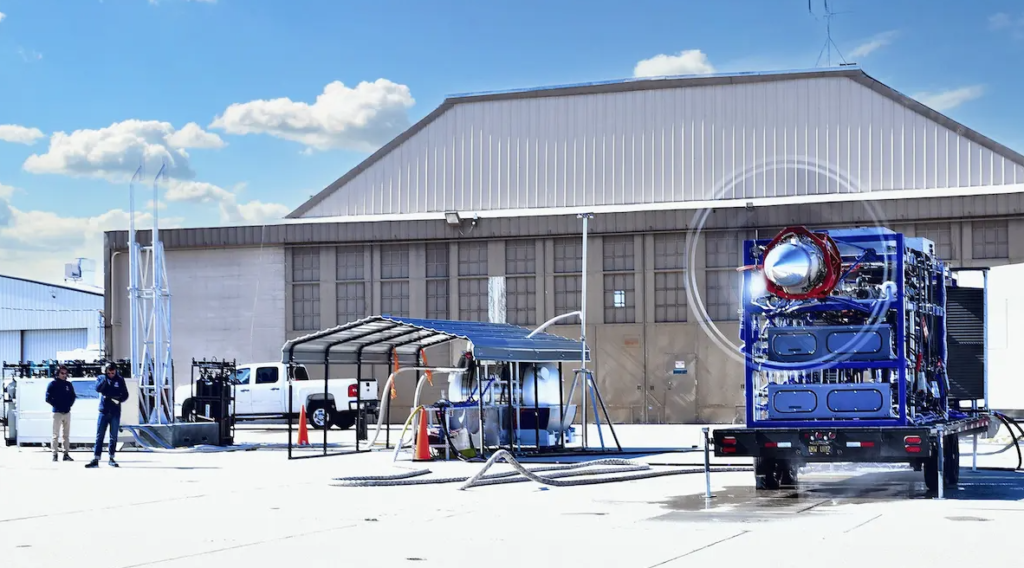The module can store 200 kilograms of liquid hydrogen
(sustainabilityenvironment.com) – Californian Universal Hydrogen has made it again. The last experiments dedicated to hydrogen aviation have been successful even if, to tell the truth, the tests were carried out on the ground and not in the air. What has been tested? The operation of a liquid hydrogen powertrain based on fuel cell technology and megawatt-class, combined with an innovative storage module patented by the company itself. “This is the largest fuel cell engine ever built, powered by liquid hydrogen,” enthusiastically said Mark Cousin, president and CTO of the company. “Which makes it the latest in a series of ‘firsts’ for Universal Hydrogen”.
Flying at zero emissions with Hydrogen
One of the main obstacles to the present energy transition is decarbonizing the global aviation industry. The industry has placed its trust on drop-in biofuels, or fuels derived from plants that can be progressively added to the mix of current fuels, to reduce emissions in the initial stages. and without changing the infrastructure or engines that are currently in place. But technology needs to advance if carbon emissions are to be zero. Utilizing hydrogen or the electric carrier is the choice that is presented. But long-range flying is not a good fit for the first. Although batteries are capable of powering an aircraft’s engines, their weight significantly reduces the aircraft’s range.
The H2 also presents challenges. The main one is the low volumetric energy density of hydrogen. In other words, for a given amount of energy, hydrogen would occupy a much larger volume than traditional aircraft fuel under environmental conditions. To address this problem, two approaches are studied:
- the compression, with pressures of the order of 700 bar that however increase the losses, reducing the duration of the mechanical parts.
- liquefaction. Bringing the carrier to very low temperatures (~ -250°C), liquefies by reducing the volume.
Cryogenic liquid hydrogen is not a panacea. Its energy per unit volume (although higher than the gaseous state) is still 24% of that of kerosene. Nevertheless, it is one of the most interesting solutions since the combination of fuel cells and electric motors has about twice the efficiency of an internal combustion engine. So you can only store half the energy.
The maxi liquid hydrogen engine and the new module
The cryogenic hydrogen module tested by the Californian company has powered the ground test bench “Iron Bird” for over 1 hour and 40 minutes, simulating the flight profile of a regional plane. The Iron Bird is a functional analog of the H2 engine that Universal Hydrogen has been testing in flight since March 2023.
read also Hydrogen combustion engines, Rolls-Royce and easyJet are serious
Developed at the Universal Hydrogen Engineering and Design Center in Toulouse, France, the module contains about 200 kilograms of liquid hydrogen and can store it for long periods. Inside there are systems to convert it into hot hydrogen gas that is consumed by the powertrain. It also incorporates features such as H2 leak detection and vent systems for safe operations, as well as a quick connection for easy installation and removal from the aircraft. Two units should be enough, according to the company, to cover 500 nautical miles with a regional airliner ATR72.

